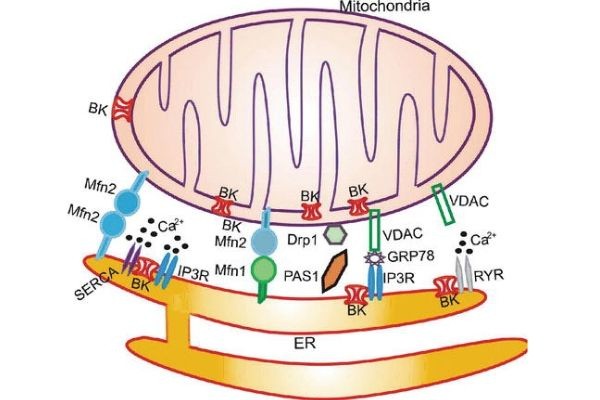
Recent studies about how cells work have revealed something special: the fact that cells consist of clanging chatterboxes inside, that communicate all the time. This was reported by Jean Vance, thirty years ago during her stay at the University of Alberta, Canada, when she confirmed that cells are, indeed, talking to each other.
Isolating mitochondria cultures from rat livers was originally assumed to be a mistake, but Vance later observed that a part of the cell was stuck to the mitochondria, which then helped to create proteins and lipids. This was a breakthrough to confirm that cells had secret activities that caused changes in lipid transfer. Once cells shared material there is bound to be changed in the cells themselves.
As cells communicate and chat up, changes in the cells were inevitably demonstrated between the endoplasmic reticulum (ER) and mitochondria. Since it was not observed before, this proved mutation in cellular structures is unavoidable. And it was not a mistake as originally thought during initial observations of rat cells.
Cells say hello to each other
The first evidence of intra-cell communication is the endoplasmic reticulum (ER) that found its way to other cell parts. It even hooked up to the Golgi Apparatus of others, which interlinked their functions, to say the least. Though most biologists consider intra-cell talk, as not a valid argument to consider. Vance even pointed out the joining of parts to transfer lipids between two intertwined cells. More research into what happens in the cell will confirm more, give light to the mechanics of cells saying hello, the first time.
Joining together and linking up
Parts of the cell are bound to combine or attach itself when two organelles are linked up. Most tether proteins will be the glue to keep two organelles linked up. These proteins are bound together as if talking to each other. The endoplasmic reticulum (ER) and plasma membrane are the main structures that transfer the lipids. Joined points or tethers are more complex, with many interactions involving organelles. Initial findings show it is just the endoplasmic reticulum, but other ways to send the lipids to the other cell are developed by communicating cells.
Other Functions are developed by interactions
Other facts came to light to researchers like when bridges were formed by organelles, with a possibility for more channels to transfer lipid as fuel between cells. For example, when mitochondria will connect to perisomes to adjust fatty acids and turn it to fuel. These bridges also regulate division of organelles in a cell.
Doing the cell tango
The endoplasmic reticulum and mitochondria are the dance partners in this particular cellular reaction. Especially, when their dance is concerned with energy transfer within a cell. Overall, these cell transport methods adapt and change according to the conditions of the cell.
Conclusion
When cells communicate, they are chatterboxes that create tethers and ways to transfer lipids effectively. If there is a blockage, then they find other options for delivery inside it. These adaptations help the ER and mitochondria find a way to find each other, whatever the conditions inside a cell.
Related Article: How secret conversations inside cells are transforming biology
© 2025 ScienceTimes.com All rights reserved. Do not reproduce without permission. The window to the world of Science Times.












